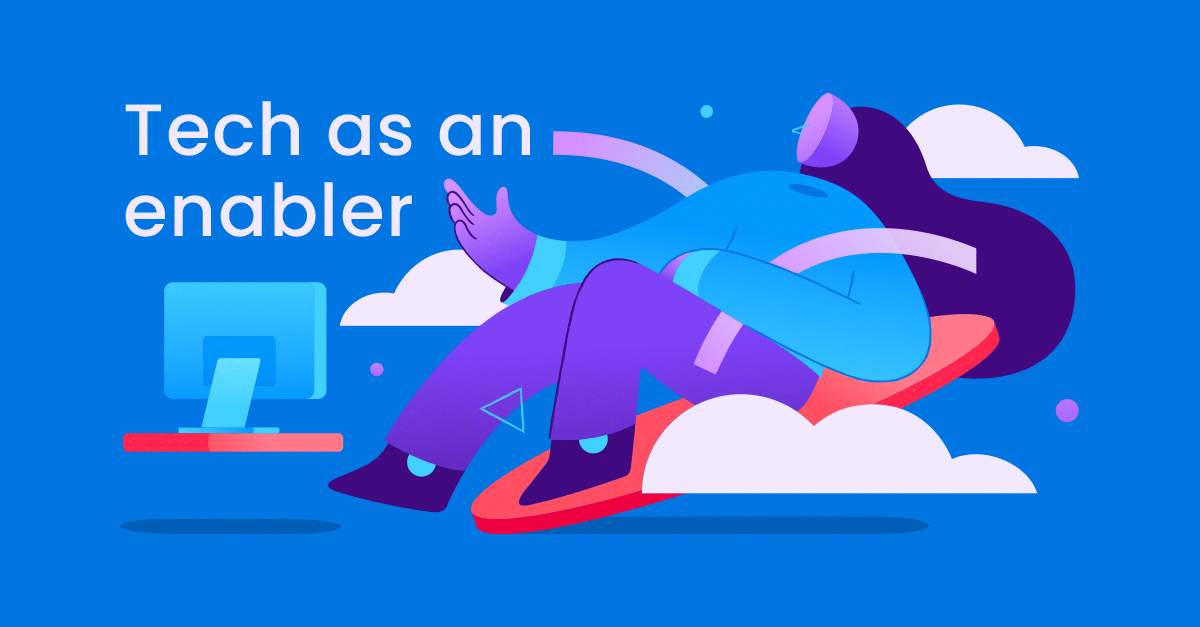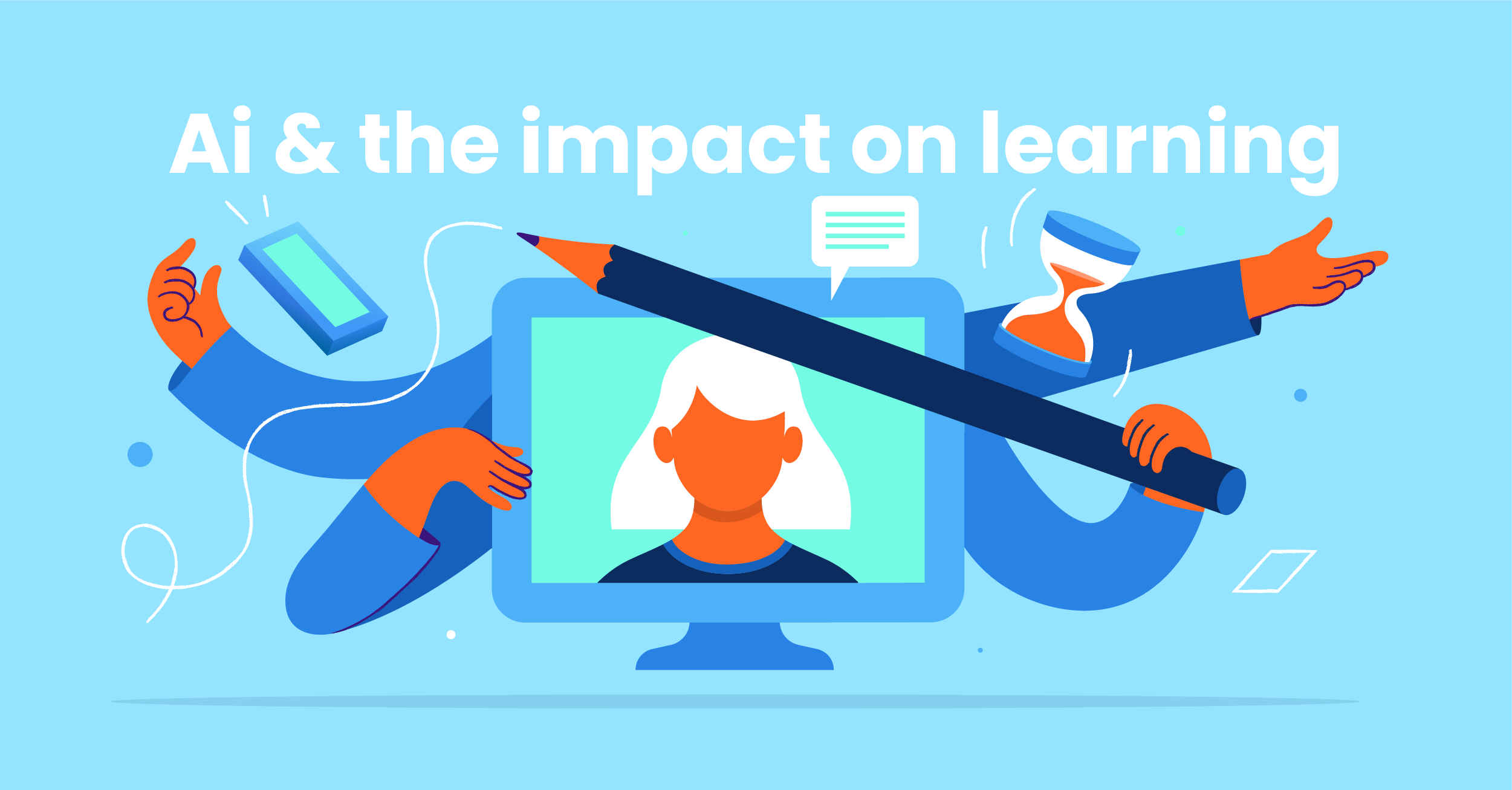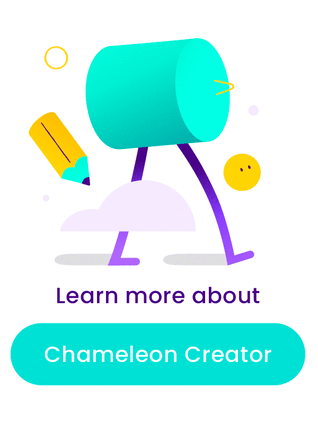Time vs impact - How to get more learning bang for less time buck
How to get more learning bang for less time buck
We have a lot of conversations with folks who work in L&D. And in the last two years you’ve all become busier and busier. Covid lit a fire under the L&D industry and everyone’s caught up in the heat.
And it’s not just L&D teams struggling to get everything done. Learners are scrambling to keep up too. Everyone has more on their plate. But the need to upskill, develop careers, share vital knowledge, and teach people how to care for themselves in this stressful world is real.
Time vs impact for L&D teams
There’s a been a huge transformation in L&D since Covid. The demand for digital learning content skyrocketed as businesses had to train and upskill staff working from home. But it hasn’t been as easy as simply converting existing training into online learning because learning needs evolved at the same time.
Pre-Covid, most L&D teams were focused on achieving business objectives, things like growing sales, improving leadership, or ensuring compliance. Post-Covid, L&D teams are seeing a shift to supporting and investing in people, creating content on resilience, wellbeing, diversity, and inclusion. But organisational objectives still exist. So, the L&D workload has grown and morphed to become very different to the way it was two years ago.
Furthermore, many L&D teams are not equipped with the skills and tools to develop large amounts of content. And traditionally, they didn't need to. Two years ago, L&D teams might only create a few online learning modules a year, and partner with a specialist to do it for them.
But now some L&D teams are creating the same amount of learning content a month as they were in a year. But they’re not set up to be content factories. They don’t have the capacity or the capability. Many learning designers are experienced in building content for workshops but not for online learning, and the requirements for online learning content are quite different.
So, the problem L&D teams face is threefold. In a world where there’s never enough time, how do you prioritise your workload, how do you work smarter, not harder, and how do you make it quicker and easier for time poor learners to learn.
Prioritise & bank those quick wins
When you’re running to stand still it’s easy to be reactive in your working habits and allow other people to dictate if a task is important. But winning the time vs impact battle comes down to prioritisation; understanding the impact a task has on your organisation and the effort it takes you to complete it.
You may have seen variations of this impact vs effort matrix, designed to help people prioritise activities. You can use this in a simple monthly exercise with your team. Put these four quadrants up on a whiteboard and allocate your projects with sticky notes.
|
HIGH IMPACT |
Quick wins Tackle these tasks first. |
Major projects Spend most of your time on these. |
|
LOW IMPACT |
Fill in tasks Do these easier tasks last. |
Pointless tasks Kick these to the kerb. |
|
|
LOW EFFORT |
HIGH EFFORT |
Quick wins are high impact, and low effort, so they’re a great place to start. When businesses start using Chameleon, we encourage them to begin by building learning that delivers quick wins, so they can demonstrate the value of their investment fast and create internal buy in for their learning project and for their new tech.
We ask, “If you had a magic wand, and you could deliver any learning to your business tomorrow, what would it be?” We steer them towards simpler content that doesn’t require extensive consultation with subject matter experts. This often means starting with learning that delivers benefits for your team, such as induction & onboarding module, or content on resilience or wellbeing etc.
We advise L&D teams to bank those quick wins before going on to more complex learning content, like a new risk management framework, which requires processes to be established, experts to be consulted, and highly contextual examples developed to illustrate.
Another good way to identify quick wins is to ask yourself, what learning content is going to be best received by my team? What are people going to be most excited about? No shade to a risk management framework, they’re vital, but fun? Not so much.
Other timesaving wins for L&D teams
Once you’ve become ruthless about prioritising your workload, and banked those quick wins, there are other ways for over stretched L&D teams to work smarter.
Educate your subject matter experts. Manage your stakeholders by making sure they understand the learning design process. We recommend sharing a one pager that clearly outlines your process. This helps your experts understand where they fit into the picture, roughly how much time they need to give the project, and when to block out time in their diary. Doing this helps everything run more smoothly.
Use the right tool for the job. When we say this, we mean invest in a rapid design tool. Naming no names, but we all know the main learning design tool on the market is an unwieldy nightmare to use. When L&D designers switch to Chameleon they tell us, “It took me three hours to build content that would have taken me days with the tool that shall not be named.”
Streamline your learning design process. Rapid design tools like Chameleon help with this too. We usually skip the storyboarding phase of learning design nowadays because it’s so quick and easy to build working prototypes with Chameleon.
The way we used to design learning was a six step process:
- Co-design workshop.
- High level design document, with recommendations for learning structure.
- Storyboard content in PowerPoint.
- Mock-up visuals of user interface.
- Reviews and feedback.
- A developer builds the module, with several rounds of feedback and review before sign off.
Now it’s a three step process, because we go straight to building working prototypes. This also has the benefit of speeding up the whole sign off process, because you’re not asking stakeholders to work hard at imagining things.
Create your content first. This is part of streamlining your learning design process. You should never be asking designers to design learning without content, as design follows content. So, if you lead with design, you risk double handling as you discover your design is not fit for purpose, or even worse, end up constraining your content to fit an arbitrary design.
Empower your subject matter experts to create learning content themselves. An emerging L&D function is supporting learning design across organisations. Smart L&D teams are taking themselves out of the picture, teaching subject matter experts the fundamentals of learning design, equipping them with easy intuitive learning design tools like Chameleon, and leaving them to make their own content while L&D adopt a quality control role.
At the end of the day, they’re probably already creating content of some kind, they’re most likely just not doing it very well, and likely in something like PowerPoint.
Can you adopt any of these tactics to make your life easier, and get more L&D impact for less time?
Learning for the flow of life
Whether learners are acquiring essential on the job skills, learning ways to improve their own performance, or upskilling so they can respond to the changing demands of the market, learning takes time. And time is in short supply.
To solve this challenge, effective L&D teams focus on delivering learning in snackable formats that can be consumed in the flow of work and life, as well as creating accessible reference resources workers can turn to when they have questions on the job.
Here are some ways L&D teams can help learners learn faster.
- Give people learning they want. People learn better when they want to learn. And people want to learn when they feel the need to learn. So, if you’ve fallen into the L&D trap of being the handmaidens of compliance or the high priests of corporate objectives, it’s time to get grassroots and ask your team what learning they actually need and want.
- Sell your learning. Take a tip from your buddies in marketing and sell your wares. If you want learners to make time for learning, they’ve got to see the value it offers. L&D teams often fall into the trap of assuming the benefits of learning are self-evident. Not so. Instead, explain the problems your learning solves and the benefits it delivers. Make people excited and hungry to learn. There is a lot L&D can learn from marketing.
- Create more microlearning. Microlearning evolved in response to the increasing pace of life and our ever shortening attention spans. Even before Covid made in-person training a challenge, people struggled to find time for learning. Not everything has to be a 20 minute deep dive. Can you create a five minute module on a topic instead? More about microlearning over here.
- Make sure learning is responsive. Build on a fully responsive mobile friendly platform so your learning can be consumed anywhere, any time, on any device. People value the ease and flexibility of responsive content, and they’re more likely to consume learning content if they can do it on the hoof. More on the importance of responsive learning here.
- Make it purty. Making learning content visually inspiring helps people learn. Find out more about integrating imagery into your learning over here.
- Contextualise the snot out of it. Make learning relevant to your team with plenty of real life scenarios they recognise from their jobs. This helps them apply learning to real work situations. This in turn makes your learning more effective because using learning immediately makes it more likely people will remember what they’ve learned.
- Give ‘em on the job reference material. Way we see it, L&D teams have two responsibilities these days. You deliver learning, which changes the way that people think feel and behave. And you support your team’s performance with standard operating procedures, and reference material they can access in the flow of work to solve problems. People don’t want to rely on a course they have to trawl through to find the relevant point. Build a reference library they can refer to whenever they need.
- Make sure the team has time to learn. Some old school managers see learning as something you do in your own time. If your organization doesn't actively promote learning and give people the time and psychological safety to learn during work time, people aren't going to do it. If there’s no time in the day to learn L&D teams are wasting their time.
There’s no magic bullet for fast, effective learning
L&D is a constant compromise. You’re juggling organisational demands with your own knowledge of best learning practice and the reality of creating learning content for a busy, stressed workforce. And as every organisation has different needs, there’s no fast, effective learning solution that’s going to deliver great results for everyone.
All big challenges are solved with many small actions. Solving your time vs impact dilemma is no different. Try something new, whether that’s microlearning or UGC, see how effective it is, and whether it works for you.
One thing you can do to make creating effective learning content quicker and easier is give Chameleon a go and see for yourself how much time it saves. Experimentation takes time, so slow down now, and try something new, to speed up in the future.
Build beautiful learning content, fast!
Experience Chameleon Creator for 30 days free!
Get access to Chameleon Creator and start creating beautiful, fully responsive e-learning content today.

Share this
You May Also Like
These Related Stories

Tech as an enabler for learning

AI & the impact on learning


